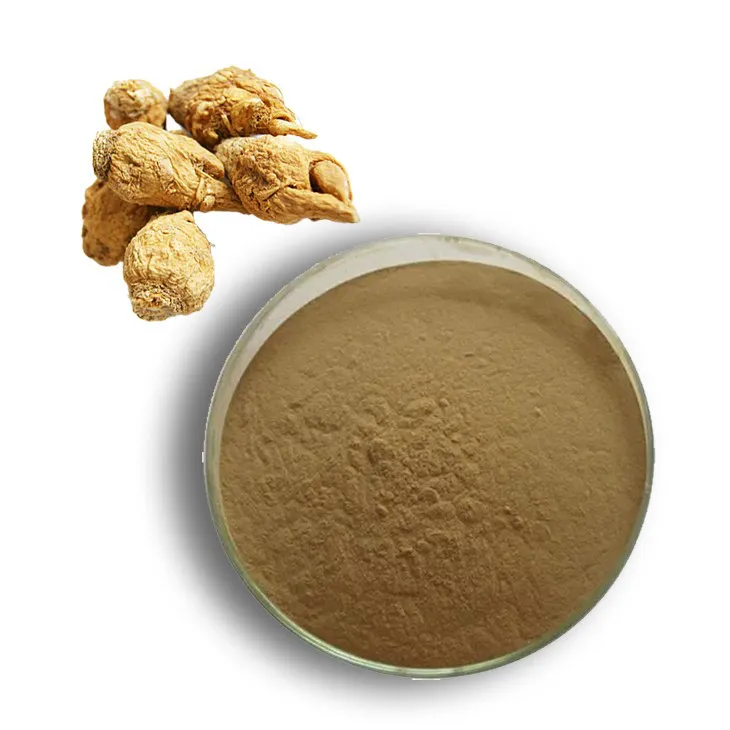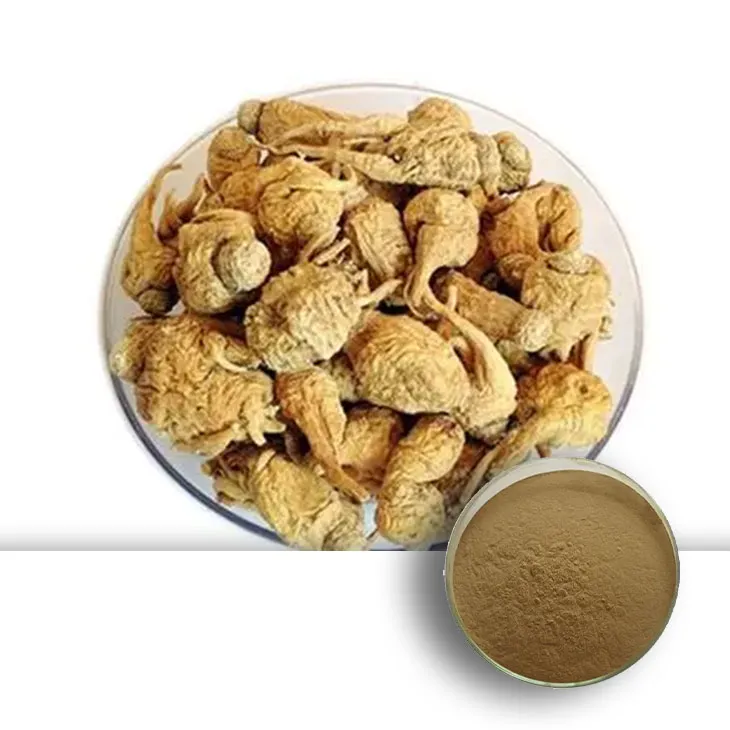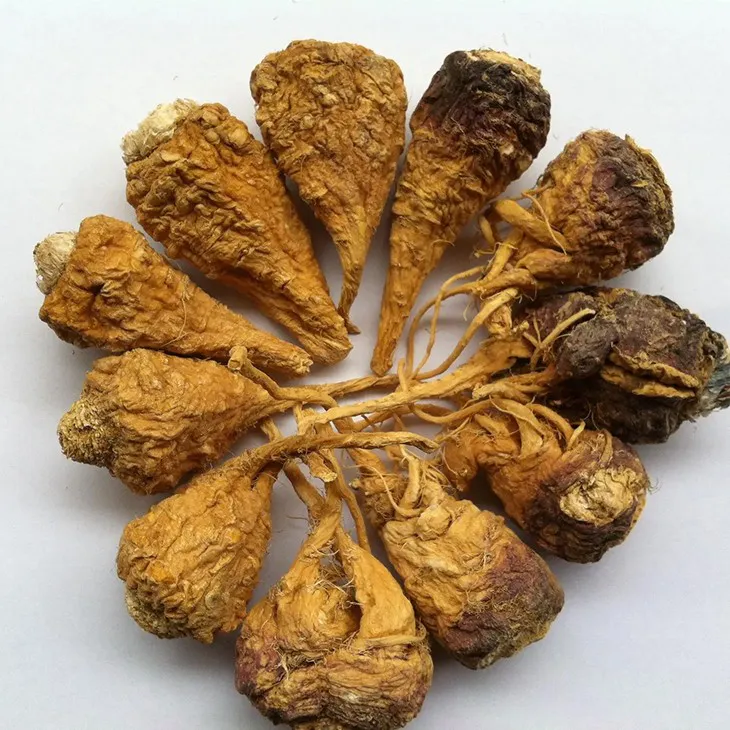- 0086-571-85302990
- sales@greenskybio.com
How to Extract Maca Extract by Steam Distillation.
2024-11-27

1. Introduction to Maca
Maca is a remarkable plant native to the high altitudes of the Andes Mountains in Peru. It has been used for centuries in traditional medicine. Maca is known for its adaptogenic properties, which means it can help the body adapt to various stressors. It contains a rich array of bioactive components such as alkaloids, glucosinolates, and macamides. These components are believed to contribute to its potential health benefits, which include enhanced energy, improved libido, and better hormonal balance.

2. Steam Distillation Process
2.1 Preparation of Maca Materials
Selection of Maca Roots: The first step in steam distillation for Maca Extract is to select high - quality Maca roots. The roots should be fresh, free from mold or other contaminants. It is advisable to source Maca from reliable suppliers who can guarantee the authenticity and quality of the plant.
Cleaning: Once the Maca roots are selected, they need to be thoroughly cleaned. Remove any dirt, stones, or other debris attached to the roots. This can be done by gently washing the roots under running water.
Drying and Grinding: After cleaning, the Maca roots should be dried. This can be achieved by air - drying in a well - ventilated area or using a low - temperature drying oven. Once dried, the roots are ground into a fine powder. This increases the surface area of the Maca material, facilitating better extraction during steam distillation.
2.2 Steam Distillation Setup
Equipment: A proper steam distillation apparatus is required. This typically includes a distillation flask, a condenser, a receiving flask, and a heat source. The distillation flask should be large enough to hold the Maca powder and the water for steam generation.
Loading the Maca Powder: Place the ground Maca powder into the distillation flask. Add an appropriate amount of water. The ratio of Maca powder to water can vary depending on the desired concentration of the extract, but a common ratio is around 1:5 (Maca powder: water).
2.3 Temperature and Pressure Control
Temperature: The temperature during steam distillation is crucial. It should be set to a level that allows for efficient vaporization of the bioactive components in Maca without causing thermal degradation. A temperature range of 100 - 120°C is often suitable. Maintaining a stable temperature throughout the distillation process is essential.
Pressure: While steam distillation is usually carried out at atmospheric pressure, in some cases, a slightly reduced pressure can be used to lower the boiling point of the water - Maca mixture, which may help in preserving the integrity of the more delicate bioactive components. However, careful control of the pressure is required to avoid any adverse effects on the extraction process.
2.4 Distillation Process
Heating: Start heating the distillation flask. As the water in the flask heats up, it will turn into steam. The steam will pass through the Maca powder, carrying with it the volatile bioactive components.
Vapor Condensation: The steam - laden with Maca Extract - then enters the condenser. The condenser cools the steam, causing it to condense back into a liquid. This liquid contains the Maca Extract along with water.
2.5 Collection of the Extract
Separation: The condensed liquid collected in the receiving flask is a mixture of Maca extract and water. To obtain the Maca extract, this mixture needs to be separated. This can be done using techniques such as solvent extraction or by using a separatory funnel if the components have different solubilities.
Drying the Extract: After separation, the Maca extract may still contain some moisture. It can be dried using methods like rotary evaporation or freeze - drying to obtain a dry Maca extract powder or a more concentrated liquid form, depending on the final product requirements.

3. Quality Control of Maca Extract
3.1 Purity Analysis
Chemical Analysis: One of the key aspects of quality control is determining the purity of the Maca extract. Chemical analysis techniques such as high - performance liquid chromatography (HPLC) can be used to identify and quantify the various bioactive components in the extract. This helps in ensuring that the extract contains the expected levels of macamides, alkaloids, and other important compounds.
Contaminant Detection: It is also important to check for contaminants in the Maca extract. This includes heavy metals, pesticides, and microbial contaminants. Tests such as atomic absorption spectroscopy for heavy metals and microbiological assays for microbial contamination should be carried out.
3.2 Potency Analysis
Bioactivity Assays: To ensure the potency of the Maca extract, bioactivity assays can be performed. For example, in - vitro studies can be conducted to test the extract's effect on cell lines related to hormonal regulation or energy metabolism. These assays can provide evidence of the extract's potential to deliver the claimed health benefits.
Standardization: Maca extract products should be standardized to ensure consistent potency. This can be achieved by setting specific levels of key bioactive components in the extract and using quality control measures to maintain these levels throughout the production process.

4. Conclusion
Steam distillation is a viable method for extracting Maca extract with its potential health - promoting bioactive components. However, careful attention to each step of the process, from the preparation of Maca materials to quality control of the final extract, is essential to ensure a high - quality product. With proper implementation of the steam distillation process and quality control measures, Maca extract can be obtained in a form that can be utilized in various applications, such as in dietary supplements or natural medicine.
FAQ:
1. What are the main bioactive components in Maca?
Maca contains various bioactive components such as macamides, macaenes, alkaloids, and polysaccharides. These components are believed to contribute to its potential health benefits.
2. How should Maca materials be prepared before steam distillation?
Before steam distillation, Maca materials should be properly cleaned to remove dirt and impurities. Then, they are usually dried and crushed into an appropriate particle size. This helps to increase the surface area for efficient extraction during distillation.
3. Why is temperature and pressure control important during steam distillation of Maca?
Temperature and pressure control is crucial during steam distillation of Maca. The appropriate temperature ensures that the bioactive components are effectively vaporized without being degraded. The correct pressure helps in maintaining a stable distillation process and also affects the vaporization rate of the components. Incorrect temperature or pressure may lead to incomplete extraction or alteration of the extract's quality.
4. How is the purity of Maca extract analyzed?
The purity of Maca extract can be analyzed through various methods. One common method is chromatography, such as high - performance liquid chromatography (HPLC). HPLC can separate and quantify the different components in the extract, thus determining its purity. Other techniques like spectroscopy can also be used to analyze the chemical composition and purity of the extract.
5. What are the potential health benefits of Maca?
Maca has been associated with several potential health benefits. It may help improve energy levels, enhance libido, and support hormonal balance. Some studies also suggest that it may have antioxidant and anti - stress properties, which could contribute to overall well - being.
Related literature
- Steam Distillation of Bioactive Compounds from Maca: Optimization and Quality Analysis"
- "Maca Extract: Properties, Extraction Techniques, and Health - Promoting Effects"
- "The Role of Temperature in Steam Distillation of Maca Extract: A Comprehensive Review"
- ▶ Hesperidin
- ▶ citrus bioflavonoids
- ▶ plant extract
- ▶ lycopene
- ▶ Diosmin
- ▶ Grape seed extract
- ▶ Sea buckthorn Juice Powder
- ▶ Beetroot powder
- ▶ Hops Extract
- ▶ Artichoke Extract
- ▶ Reishi mushroom extract
- ▶ Astaxanthin
- ▶ Green Tea Extract
- ▶ Curcumin Extract
- ▶ Horse Chestnut Extract
- ▶ Other Problems
- ▶ Boswellia Serrata Extract
- ▶ Resveratrol Extract
- ▶ Marigold Extract
- ▶ Grape Leaf Extract
- ▶ blog3
- ▶ blog4
-
The best coconut water powder on the market.
2024-11-27
-
Organic Non - GMO Orange - Flavored Powder.
2024-11-27
-
Jujube extract of the best quality.
2024-11-27
-
Bulk purchase of silymarin extract.
2024-11-27
-
Feverfew Extract
2024-11-27
-
Bilberry Extract
2024-11-27
-
Lycopene
2024-11-27
-
Bamboo Leaf extract
2024-11-27
-
Cat Claw Extract
2024-11-27
-
Dandelion Root Extract
2024-11-27
-
White Peony Extract
2024-11-27
-
Natural grape seed extract
2024-11-27
-
Citrus Aurantii Extract
2024-11-27
-
Red Wine Extract
2024-11-27





















